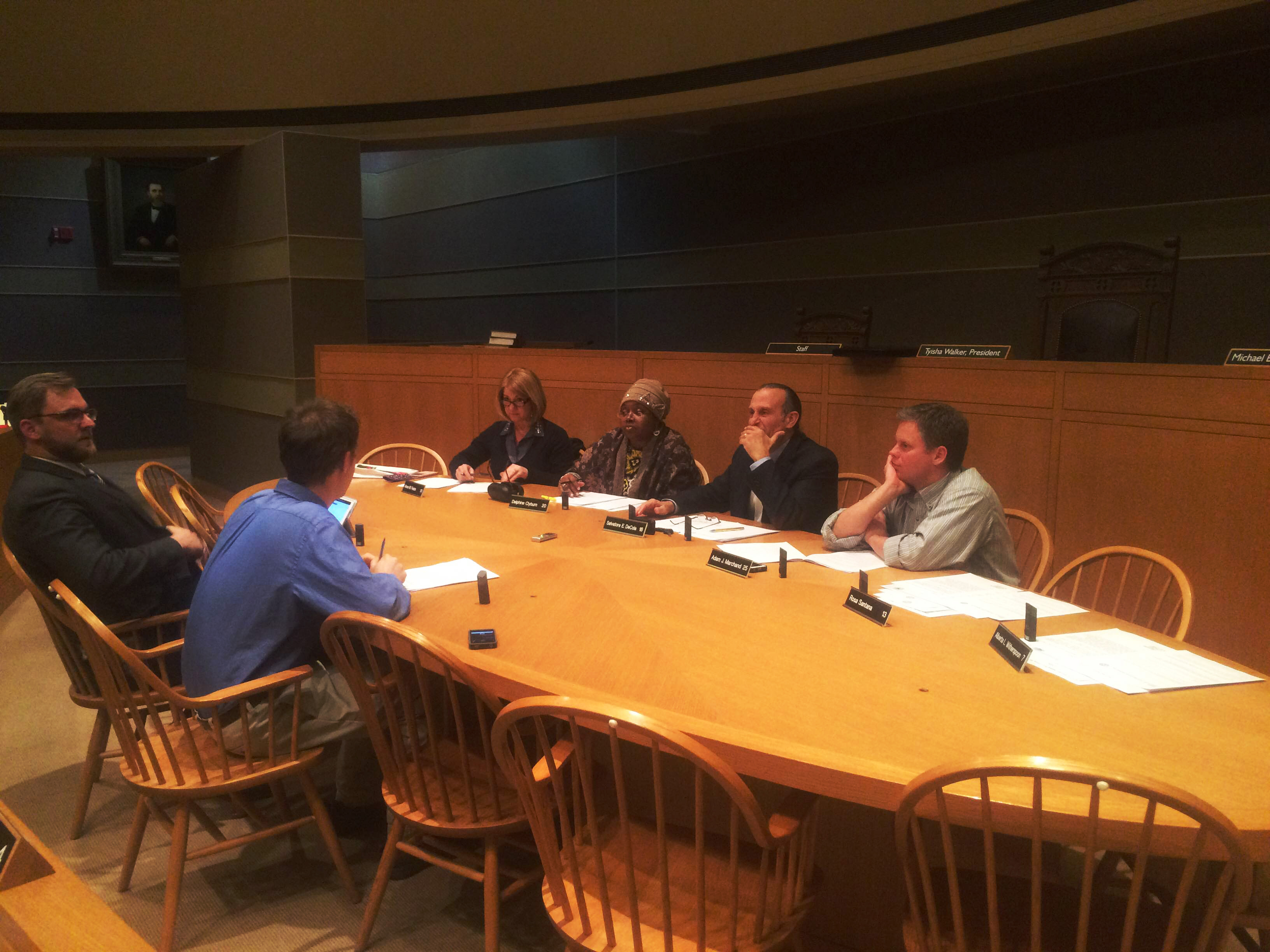
The Board of Alders’ City Services and Environmental Policy Committee kicked off its first meeting of the new aldermanic session by moving plans for a new bike lane on Edgewood Avenue one step closer to reality.
A joint project between the city’s transportation and engineering departments, the plans would be the first of its kind in the state: a two-way bike lane, cut off from traffic by a row of parking. The construction costs for the project would be paid for with a $1.2 million grant, preliminarily approved Tuesday night, from the Connecticut Department of Transportation, according to Director of Transportation, Traffic and Parking Doug Hausladen ’04. The lane, which would extend roughly two miles down Edgewood Avenue to connect Westville to Downtown, would be a “guinea pig project” for future bike lanes in the city and state, Hausladen said.
“A street that has designated spots for pedestrians, designated spots for cyclists, designated spots for parking and designated spots for vehicles is the safest type of street,” city engineer Giovanni Zinn ’05 said. “It’s not just a bike project, but really a complete street and community connectivity project.”
Zinn said the city chose Edgewood Avenue partly as a way to relieve bikers from commuting on the crowded Whalley Avenue thoroughfare between Westville and Downtown. Only 2 percent of bikers report feeling comfortable on Whalley, he said.
Hausladen added that the decision to chose Edgewood Avenue for the bike lanes was partially due to the number of schools along the artery. Constructing the bike lane in this area would ease passage going to and from school, but the ultimate decision for Edgewood was down to the state Department of Transportation, he said. The department was influenced by factors including the lower density of traffic on Edgewood compared to other major streets in the area.
The bike lanes are a novel development in the city’s infrastructure. Responding to citizens’ concerns about the safety of biking in the city, Hausladen said the bike lanes would border the curb and be “separated” from traffic by a row of parked cars.
Hausladen said these specifications for the new bike lanes were, until recently, illegal. State law had required that cars park within 12 inches of the curb, a requirement that would have prohibited the new design. But Hausladen said he and Zinn had worked with the city’s delegation in Hartford to secure the legal modifications that allow plans to move forward.
Some members of the Edgewood neighborhood have expressed opposition to the bike lanes, according to Edgewood Alder Adam Marchand GRD ’99. He said residents are concerned that the plans would decrease the amount of available parking in the neighborhood. Committee members at the meeting did not say whether the new bike lane would definitively decrease parking availability.
Hausladen said the city has heard residents’ concerns and is planning a series of meetings in the neighborhood that will be held at the Troup and Edgewood schools in the next two months.
“The community process will happen, for the one particular Edgewood thing we’re talking about, in the next couple of months,” he said. “Once we get a design from the community, we’ll come back to get city authorization.”
Though the state will pay for all construction costs, Zinn said the lanes’ design will be done by the city. Zinn said he expects design costs to total around $50,000 — but designing the bike lanes, he said, will provide an opportunity for the city to learn to implement projects more efficiently in the future.
East Rock Alder Anna Festa, who voted in favor of the plans, said she wants to ensure that the new bike lanes will be coupled with increased enforcement of existing traffic laws for bikers.
Hausladen said the new bike lane would encourage cyclists to adhere to traffic law. Under the current system, he said, cyclists chose to ignore traffic laws when they find them inconvenient or unsafe. He said the current state of the city’s cycling infrastructure encourages cyclists to violate traffic codes, but updating the infrastructure might change the incentives.
“I want to build the infrastructure and then educate people in how to use it, and then enforce them in using it the way it was designed,” Hausladen said. “Once we have the infrastructure to promote safe riding, it’ll be high time to do what we did in 2009, which is to enforce motor-vehicle law on cyclists.”
New Haven has the highest percentage of residents biking to work of any city in New England.







